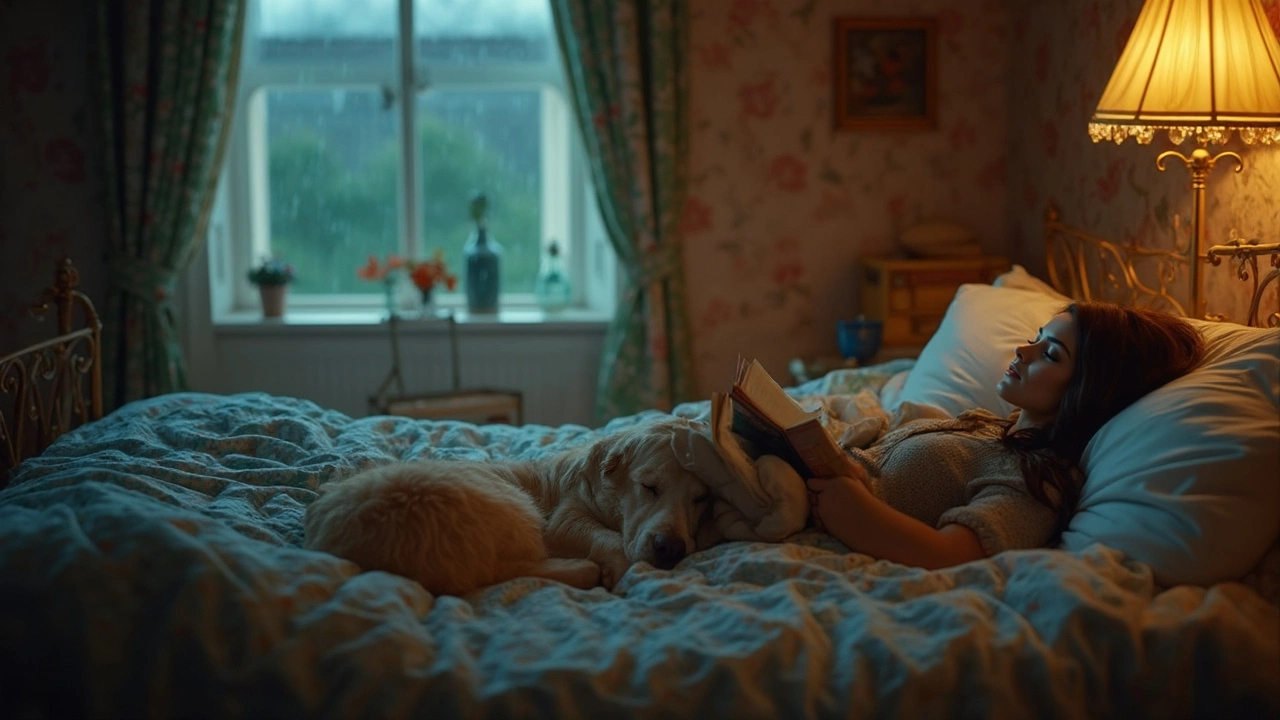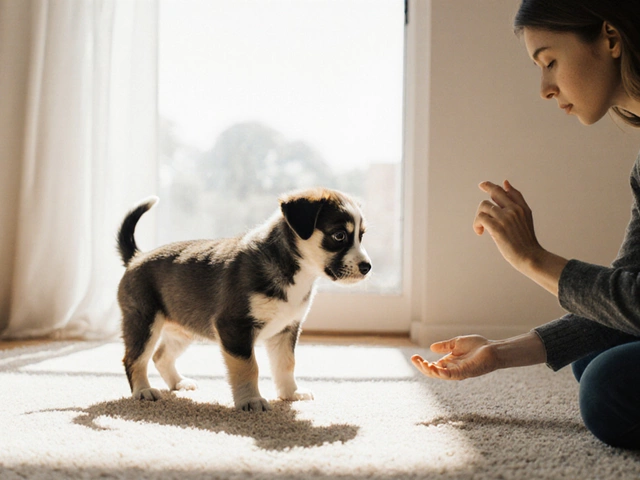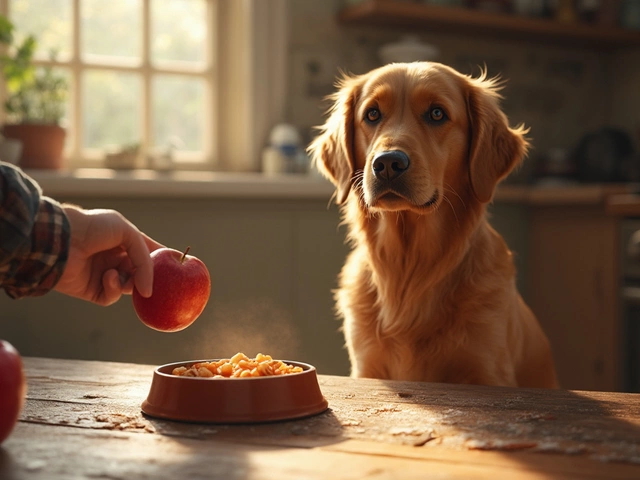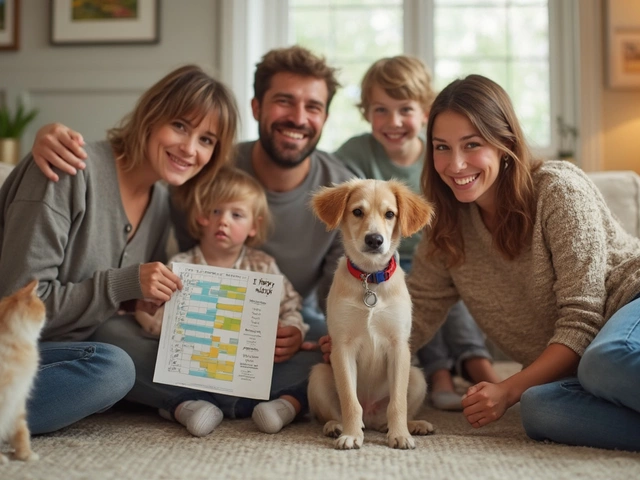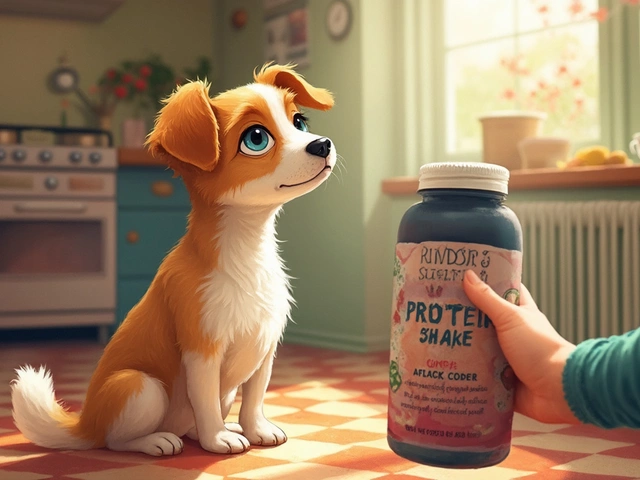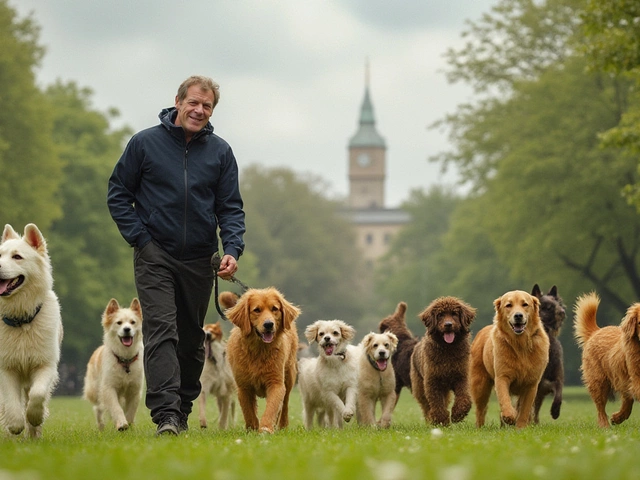If your dog acts like your shadow and claims a spot on your bed every night, you’re definitely not alone. A huge number of dog owners, at least 56% in a recent 2024 survey, admit their pets sleep right beside them. But why do dogs actually do it? Spoiler: it’s not just because they like your comfy comforter.
Dogs are creatures of habit—and those habits go way back. Dogs in the wild sleep with their pack because it keeps them safe and warm. When your dog curls up with you, they’re tapping right into those old instincts. Your bed just happens to be their new “den.”
But there’s more to it than instincts. Dogs want to feel close to the person they trust most. Your scent and heartbeat help them relax and even lower their stress. If you’ve noticed your dog sticks closer after a thunderstorm or a tough day, it’s not a coincidence—they’re seeking safety and comfort from you, not just a soft spot.
- Instincts and Pack Mentality
- Comfort and Security
- What Your Dog’s Choice Says About Your Relationship
- Getting Your Dog to Use Their Own Bed
Instincts and Pack Mentality
Dogs are wired to be social animals. Even the smallest chihuahua or the laziest bulldog has a bit of that wild ancestry left in them. Back in the day, wild dogs and wolves always slept together in a group, called a pack, for one main reason: survival. Curling up together kept them warm and guarded against threats in the night.
This old-school pack instinct is still lurking in your dog. When your pup picks your bed instead of their own dog bed, they’re not just being picky—they see you as part of their "pack." For them, sleeping next to their favorite human is their way of saying, “You’re family.”
Sleeping close also means trust. Dogs only get vulnerable, like dozing off flat on their back with their belly up, when they trust who’s with them. If your furry pal insists on sharing your pillow, that’s not a bug, it’s a feature of their natural dog sleep habits.
- Why dogs sleep with owners? Because they want the same closeness and safety their ancestors did in the wild.
- Dogs will usually pick the warmest, coziest spot—often right next to you—because it triggers their “denning” instinct.
- Pups who were raised around other dogs or young kids often keep this habit into adulthood.
Interestingly, studies have shown that dogs who sleep with their owners tend to have less separation anxiety. This shows that sharing sleeping space is less about being spoiled and more about meeting a built-in need for security. Want proof? Here’s a quick breakdown from a recent Aussie study in early 2024:
| Behavior | Dogs Sleeping Alone | Dogs Sleeping With Owners |
|---|---|---|
| Signs of Stress When Left Alone | 62% | 34% |
| Frequent Barking | 48% | 22% |
That’s a big drop in stress and barking just from letting a dog sleep nearby. So next time you’re crowded by a snoring snout, remember—it’s just natural, historic canine bonding at work.
Comfort and Security
Dogs feel safest when they’re close to the people they trust most. That’s why so many pups ignore their fancy dog beds and head straight for yours. Your scent and body heat make your bed the ultimate safe space. It’s not about the thread count—it’s about feeling secure.
Studies have shown that a dog’s heart rate slows down when they’re near their owner. That's real proof they relax more at your side. Some dog owners even notice their pets are less startled by noises or changes in the house when they share a bed. It’s a sign your dog relies on you to feel protected, especially at night when they’re most vulnerable.
This behavior doesn’t just come from nowhere. Think about how wild dogs sleep: huddled up together for warmth and safety. Your dog’s just swapping the pack for your pillow. And if your dog’s been through stress or a big change—like moving or adding a new pet—they’re even more likely to seek your company at bedtime.
- Dog sleep habits: Sleeping with you often means your dog feels less anxious. You’re their safety net.
- Dog comfort: The steady rhythm of your breathing and heartbeat can actually help dogs fall into a deeper sleep.
- Temperature control: Your body heat helps keep your dog warm, especially smaller breeds or older dogs that chill easily.
If you have a nervous or rescue dog, don’t be surprised if they ignore their dog beds for a spot close to you. This isn't them being stubborn—they're just hardwired to go where they feel safest.
| Factor | Effect on Dog’s Comfort |
|---|---|
| Your scent | Reduces anxiety, encourages restful sleep |
| Body heat | Keeps them warm, especially on cold nights |
| Physical proximity | Makes dogs feel protected and less vulnerable |
Some dogs eventually swap back to their own dog beds once they feel safe and settled. But many will always pick the closest spot to you, because when it comes to comfort and security, you’re their number one choice.
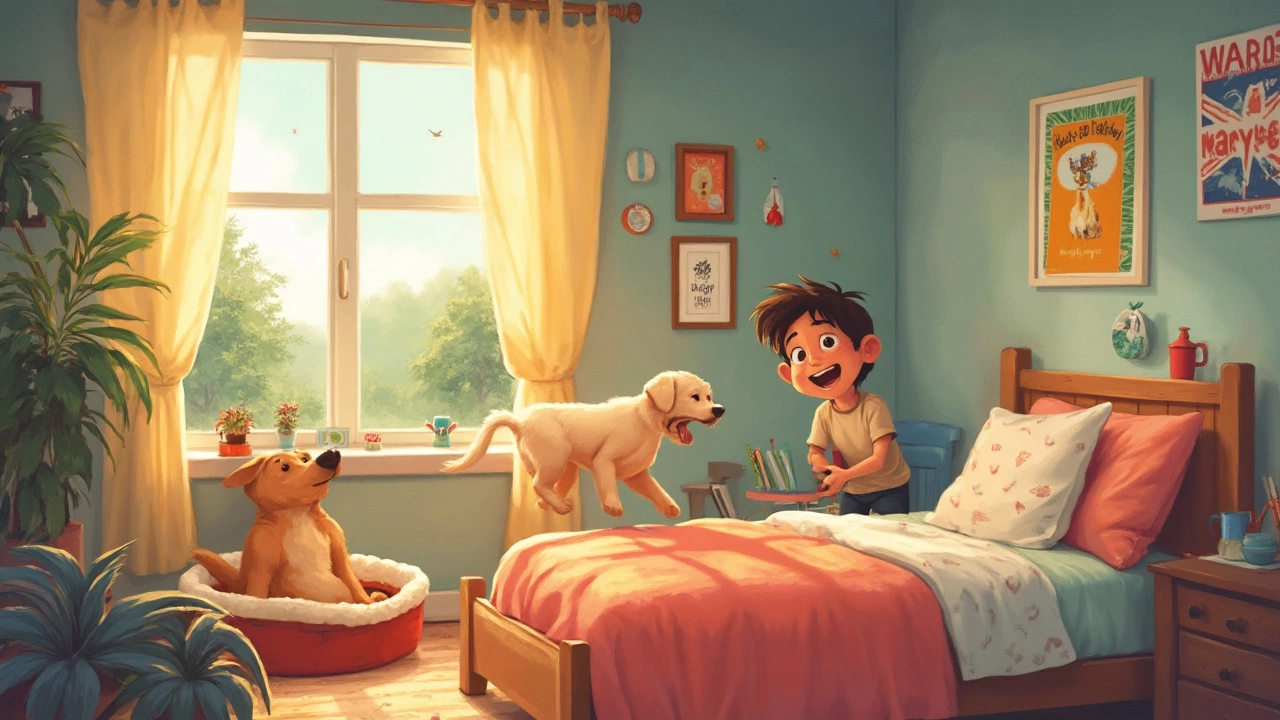
What Your Dog’s Choice Says About Your Relationship
Your dog’s sleeping habits say more about your relationship than you might think. If your pup chooses to sleep with you instead of alone or in their dog bed, it’s a sign of deep trust and comfort. Most dogs pick their person, not just the spot, because your presence feels safe to them. That closeness is their way of saying, “You’re family, and I feel safe with you.”
Sleeping with you isn’t just about warmth or cozy blankets. Dogs bond through physical closeness—sharing space is their style of showing affection. If your dog is a rescue, you might notice they stick closer, especially at night, as they're still building trust. On the other hand, confident dogs might give you some space, but still check in with a quick snuggle before moving to their own bed.
The type of contact matters, too. If your pup shares your pillow or curls up behind your knees, they’re not just comfy—they want to be as close as possible. Even their choice of position can tell you something:
- Sleeping with their back pressed to you? That’s a sign they feel protected and want to protect you back.
- At your feet? That usually means respect or a bit of independence—they want to stay close without being clingy.
- Head on your chest or arm? It’s a total trust move. Your heartbeat is literally calming to them.
Now, if your dog prefers their own dog bed, don’t take it personally. Some dogs, especially older ones or certain breeds, like having more control over their space. Health issues like joint pain or heat sensitivity can play a role, too. The main thing to notice is whether your dog seems relaxed and secure with you—even if they choose their own sleeping spot.
Want a snapshot of how common these habits are? Here’s a look at the numbers from a recent North American pet owner poll:
| Sleeping Arrangement | % of Dog Owners |
|---|---|
| Dog sleeps in owner’s bed | 56% |
| Dog sleeps in own bed in bedroom | 29% |
| Dog sleeps outside the bedroom | 15% |
Whatever your situation, your dog’s sleep habits are a feedback loop for your relationship. If you notice changes, like suddenly wanting more distance or being clingier than usual, it might be worth a vet visit or a little extra attention at home. Dogs are creatures of connection; your bedtime routine is just another thing that brings you closer—or gives you both a good night’s sleep.
Getting Your Dog to Use Their Own Bed
If your dog treats your bed like prime real estate, getting them to use their dog bed can be a challenge—but it’s totally doable. Dogs are creatures of comfort and habit. If their bed isn’t comfy or in the wrong place, they’ll make a beeline for yours. So, let’s cover some simple ways to make their own spot more appealing.
First, the quality of the dog bed matters. Dogs are picky about where they sleep. Beds that are too small, too hard, or lumpy just get ignored. Look for a bed that fits your dog’s size and sleeping style—curled up, stretched out, whatever they like best. Orthopedic beds help with older dogs or those with joint pain.
- Scent and Familiarity: Dogs use their nose for comfort. Put an old unwashed T-shirt of yours in their bed to help them feel connected to you, even if you’re not there.
- Location: Don’t hide the dog bed in some lonely corner. Put it in a spot where your family hangs out, especially at first. Dogs want to be near you, not banished to the laundry room.
- Positive Reinforcement: Every time your dog chooses their bed, toss them a treat or give praise. Make it a big deal! Consistency is key here—if you sometimes let them on your bed, expect mixed results.
- Routine: Stick to a bedtime routine. Every night, guide them to their dog bed and reward them for settling in. Over time, your pup will associate their bed with good things.
Crate training can also help. Not all dogs need a crate, but for some, it gives a safe, cozy space that feels like their own room. If your dog’s crate is their favorite place, just add the bed inside.
| Did It Work? | Pup Success Rate |
|---|---|
| Owners using treats | 72% |
| Owners with comfy beds | 68% |
| Unwashed T-shirt method | 53% |
Patience goes a long way. Some dogs switch beds in a day, others take weeks. Be consistent, stay positive, and make that dog bed the best spot in the house. Before you know it, you might just have your own side of the bed back.

